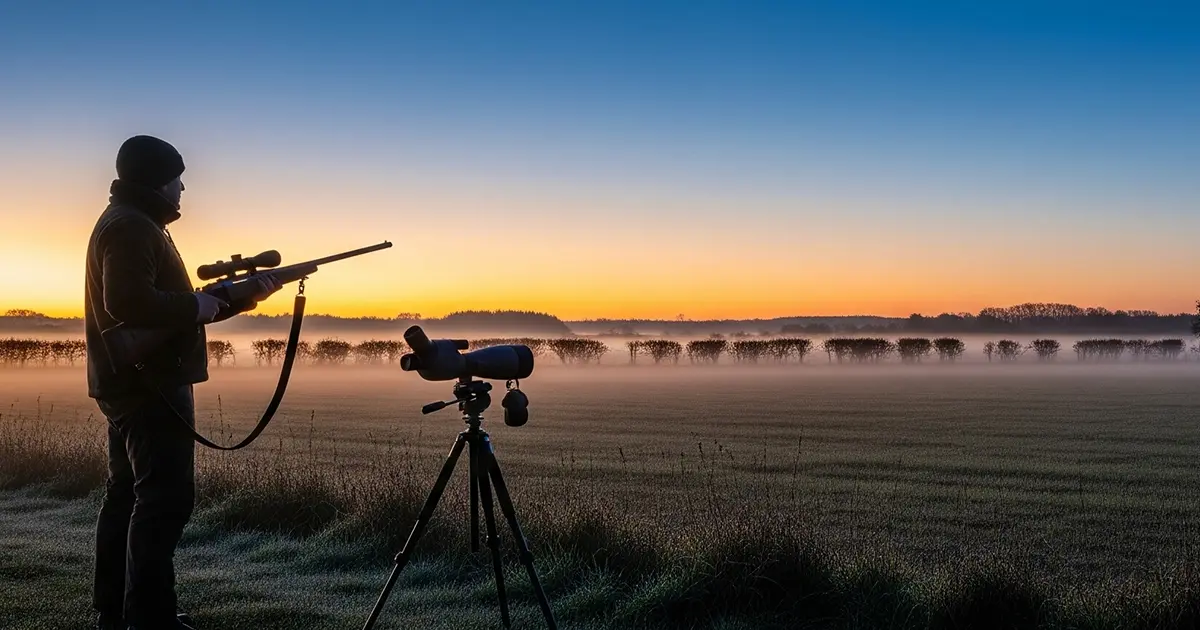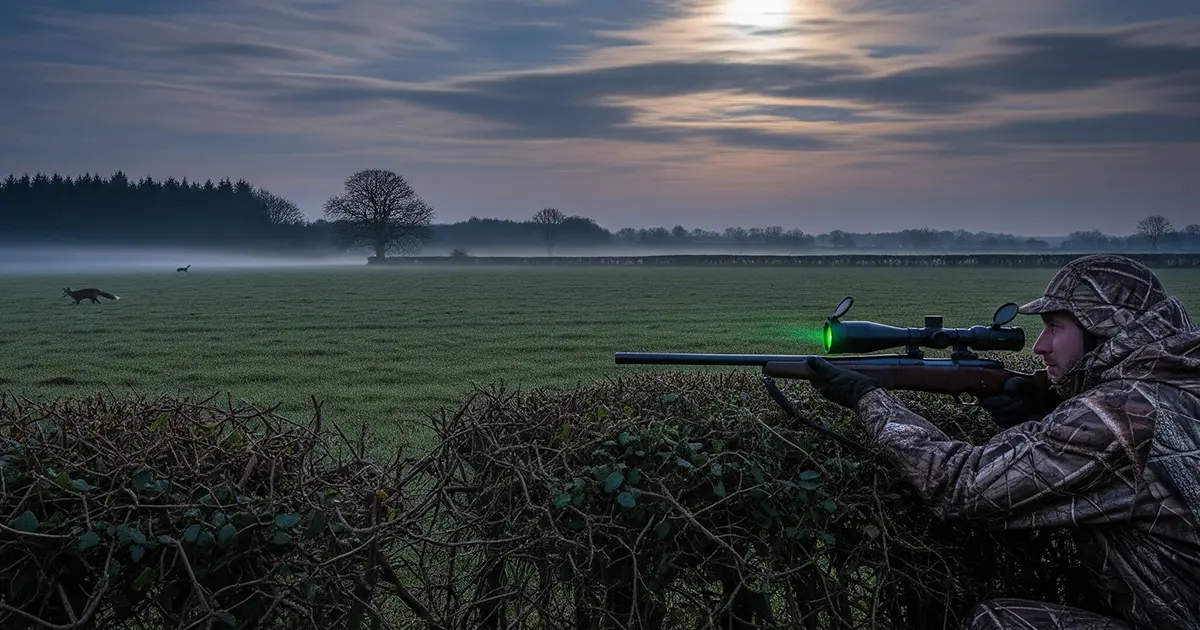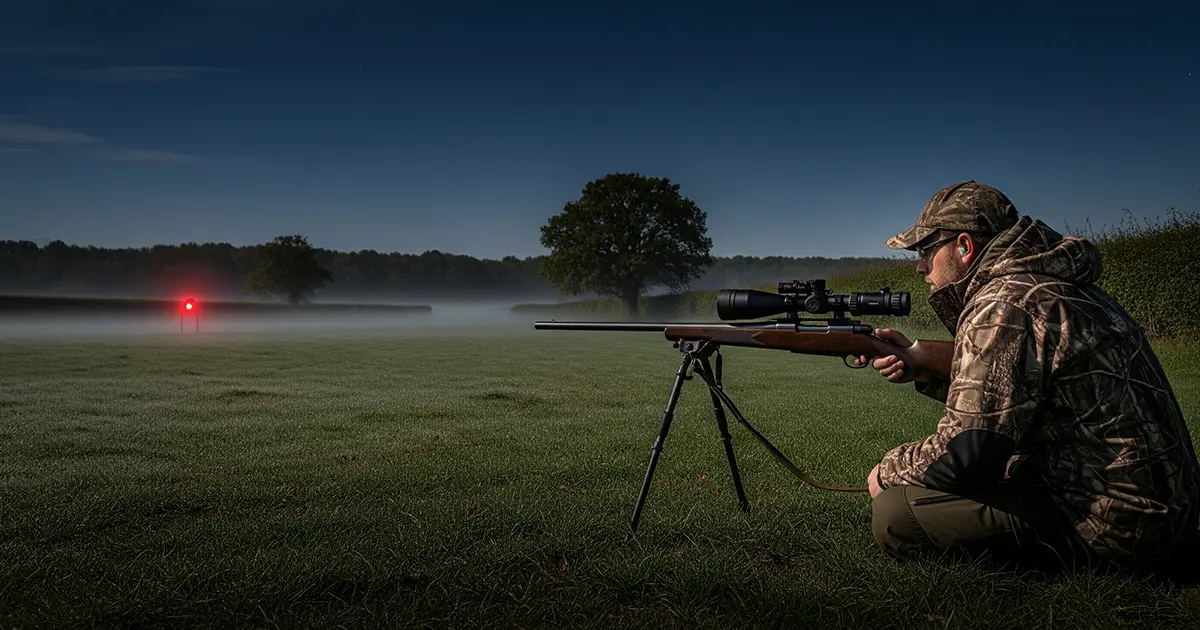Choosing between thermal imaging and night vision can be a big decision for any shooter. Both technologies offer clear advantages, but they work in very different ways and suit different situations. Understanding the differences, the costs, and the practical realities in UK conditions will help you make the right investment.
At The Instinctive Shooter, we see a lot of customers struggling to decide between the two. Some arrive convinced they know what they need, only to realise that their preferred option is not legal for their intended quarry. Others simply do not know how the specifications on a box translate into actual performance in the field. Let’s break it down.
How the technologies work
Night vision amplifies available light, whether from the moon, stars, or an infrared (IR) illuminator. It produces an image in shades of green or grey that allows you to identify detail once your eyes adjust. Modern digital night vision scopes also allow you to record footage or change display colours.
Thermal imaging detects heat rather than light. This makes it highly effective for spotting warm-blooded animals even in total darkness or light cover. Instead of a natural-looking picture, you see heat signatures in contrasting colours that help you detect movement and presence, even if the target is partially obscured.
Legal considerations in the UK
If you are stalking deer, you cannot use thermal or night vision to shoot during hours of darkness. Daytime deer stalking requires traditional optics or daylight-capable scopes. Thermal and night vision can be used legally for pest control on species such as foxes or rabbits, but it is essential to check the latest government and local bylaws before heading out.
David Bellamy, Managing Director of The Instinctive Shooter, advises:
“Technology moves quickly, but the law changes more slowly. Never assume what is legal in one discipline applies to another. We guide our customers through this before they make a purchase, so they know exactly where and how they can use their equipment.”
Comparing performance in real-world conditions
Weather and environment
Night vision excels in cooler, drier air with some natural light. On a clear, moonlit night, it can produce excellent clarity. However, image quality drops in fog, drizzle, or high humidity because the IR light reflects off water particles.
Thermal is less affected by mist or light rain, but hot weather can reduce contrast between the target and the background. For example, on a hot August evening, a rabbit’s heat signature may blend into warm ground, making it harder to spot.
Detection vs identification
Thermal can detect a fox at over 1,000 metres with a mid-range monocular, but identifying it as a fox rather than a dog at that range is difficult. Night vision offers more visual detail for positive identification, provided the target is within its effective range and lighting conditions are good.
Practical considerations before you buy
Weight and handling
Thermal scopes can be heavier than night vision, which can unbalance your rifle. This matters if you are on foot for several hours or shooting from a less stable position. Always handle the unit in person before deciding.
Battery life
Cold weather drains batteries quickly, especially in digital devices. If you are lamping foxes in February, you might need spare batteries or a portable power bank. Factor this into your budget and field kit.
Compatibility with your rifle
Not every optic will mount neatly to every rifle. Some thermal units require specific rails or adaptors, while many digital night vision scopes have particular eye relief requirements. At The Instinctive Shooter, we check compatibility before purchase and can fit the unit for you.
Matching technology to your shooting needs
Pest control in open fields
A thermal monocular for detection, paired with a digital night vision scope for identification, is a popular combination. You spot quickly, then confirm before taking the shot.
Woodland stalking for pests
Night vision often works better here, as the IR beam gives detail in shaded or covered areas without relying on heat contrast.
Mixed terrain and variable weather
Thermal offers versatility for detection across hedgerows and fields, but keep a backup method for positive ID.
Tips from the field
- Test both technologies in realistic conditions before committing.
- Consider your most common quarry, shooting hours, and environments.
- Budget not just for the device, but also for mounts, spares, and protective cases.
- Ask to see sample footage or through-the-scope images from UK conditions, not just manufacturer demos.
As David puts it:
“Our goal is not to sell you the most expensive kit, it is to match you with the tool that will actually help you in the field. A poor fit wastes money and time, and in shooting sports both are too valuable to waste.”
Final thoughts…
Both thermal and night vision have their place in a shooter’s kit. Your choice will depend on legal limits, your quarry, and the conditions you shoot in most often. The right decision is the one that allows you to work efficiently, ethically, and within the law.
If you are still unsure, we will walk you through the pros and cons in plain English, making sure you leave confident in your choice.
Straight Shooting Answers: Thermal vs Night Vision FAQs
Can You Legally Use Thermal Or Night Vision For All Types Of Shooting In The UK?
No. You cannot use either for shooting deer during hours of darkness, but they are legal for certain pest species like foxes or rabbits. Always check the latest government regulations and local restrictions before you go out.
Which Technology Works Better In Fog Or Rain?
Thermal usually performs better in fog, drizzle, or mist because it detects heat rather than relying on light. Night vision can struggle as moisture reflects the IR light, reducing clarity.
Do You Need Both Thermal And Night Vision For Shooting?
Not always, but many shooters find using thermal for detection and night vision for identification is the best combination. This approach balances quick spotting with detailed confirmation before the shot.
How Long Do Batteries Last In The Field?
Battery life varies by model, temperature, and settings. Cold weather drains batteries faster, so it is worth carrying spares or a power bank if you are shooting for long periods.
Is Thermal Always More Expensive Than Night Vision?
Generally yes, especially for higher resolution units with long detection ranges. However, digital night vision can still be costly if you want high quality optics and advanced features.
Which Is Lighter To Carry, Thermal Or Night Vision?
Night vision units are often lighter, which can help if you are covering a lot of ground. Thermal scopes can be heavier, so it is worth handling both before making a choice.
Will My Current Rifle Setup Work With Thermal Or Night Vision Devices?
It depends on the model and mounting system. Some optics need specific rails or adaptors, so it is always worth getting compatibility checked before buying.




